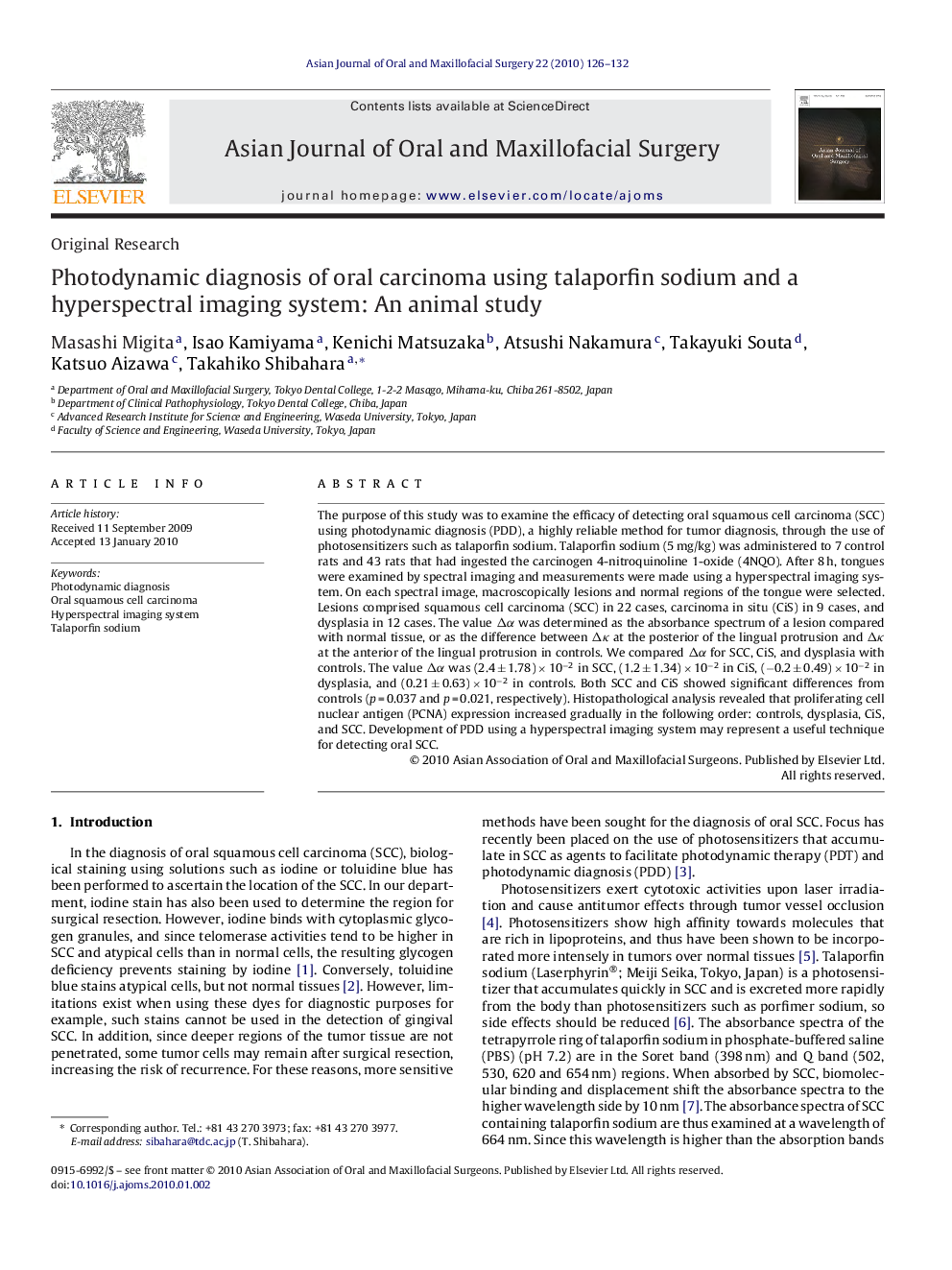| Article ID | Journal | Published Year | Pages | File Type |
|---|---|---|---|---|
| 3122118 | Asian Journal of Oral and Maxillofacial Surgery | 2010 | 7 Pages |
The purpose of this study was to examine the efficacy of detecting oral squamous cell carcinoma (SCC) using photodynamic diagnosis (PDD), a highly reliable method for tumor diagnosis, through the use of photosensitizers such as talaporfin sodium. Talaporfin sodium (5 mg/kg) was administered to 7 control rats and 43 rats that had ingested the carcinogen 4-nitroquinoline 1-oxide (4NQO). After 8 h, tongues were examined by spectral imaging and measurements were made using a hyperspectral imaging system. On each spectral image, macroscopically lesions and normal regions of the tongue were selected. Lesions comprised squamous cell carcinoma (SCC) in 22 cases, carcinoma in situ (CiS) in 9 cases, and dysplasia in 12 cases. The value Δα was determined as the absorbance spectrum of a lesion compared with normal tissue, or as the difference between Δκ at the posterior of the lingual protrusion and Δκ at the anterior of the lingual protrusion in controls. We compared Δα for SCC, CiS, and dysplasia with controls. The value Δα was (2.4 ± 1.78) × 10−2 in SCC, (1.2 ± 1.34) × 10−2 in CiS, (−0.2 ± 0.49) × 10−2 in dysplasia, and (0.21 ± 0.63) × 10−2 in controls. Both SCC and CiS showed significant differences from controls (p = 0.037 and p = 0.021, respectively). Histopathological analysis revealed that proliferating cell nuclear antigen (PCNA) expression increased gradually in the following order: controls, dysplasia, CiS, and SCC. Development of PDD using a hyperspectral imaging system may represent a useful technique for detecting oral SCC.
